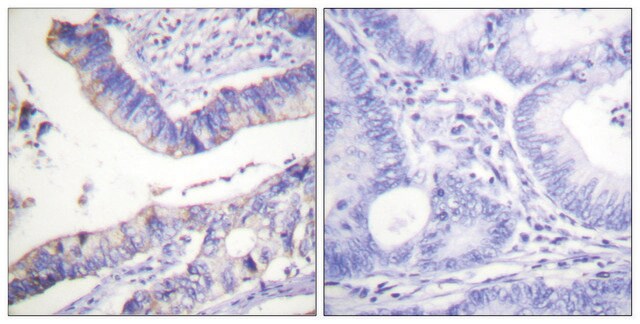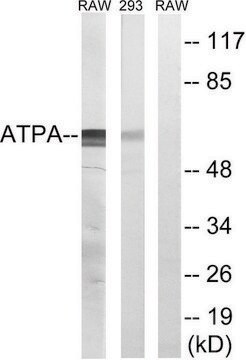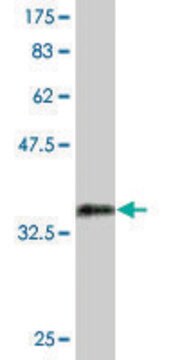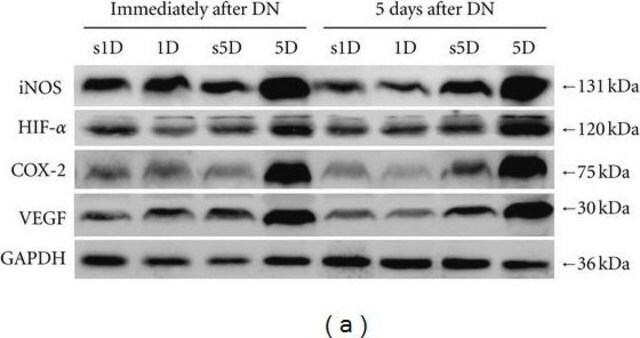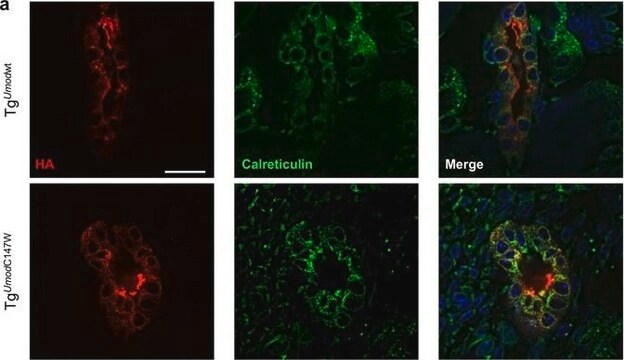MABF268
Anti-IRF3 Antibody, clone SL-12
clone SL-12, from mouse
Synonyme(s) :
Interferon regulatory factor 3, IRF-3
About This Item
Produits recommandés
Source biologique
mouse
Niveau de qualité
Forme d'anticorps
purified antibody
Type de produit anticorps
primary antibodies
Clone
SL-12, monoclonal
Espèces réactives
human, mouse
Technique(s)
immunocytochemistry: suitable
immunoprecipitation (IP): suitable
western blot: suitable
Isotype
IgG1κ
Numéro d'accès NCBI
Numéro d'accès UniProt
Conditions d'expédition
wet ice
Modification post-traductionnelle de la cible
unmodified
Informations sur le gène
human ... IRF3(3661)
Description générale
Immunogène
Application
Immunoprecipitation Analysis: A representative lot immunoprecipitated IRF3 in HEC1B cells treated or untreated with virus and M059J DNA-PK - and M059J cells with DNA-PK+ (Karpova, A.Y., et al. (2002). PNAS. 99(5):2818-2823).
Western Blotting Analysis: A representative lot detected IRF3 in HFK (human foreskin keratinocytes) cells expressing BPV ORF′s (Ronco, L.V., et al. (1998) Genes Dev. 12:2061-2072).
Western Blotting Analysis: A representative lot detected IRF3 in Transfected Mock and SeV infected 293 cells (Basler, C.F., et al. (2003) Journal of Virology. 77(14):7945-7956).
Immunocytochemistry Analysis: A representative lot detected IRF3 in hec-1b cells infected with delNS1 or PR8 (Talon. J., et al. (2000). Journal of Virology. 74(17):7989-7996).
Immunocytochemistry Analysis: A representative lot detected IRF3 in HEC1B cells treated or untreated with virus (Karpova, A.Y., et al. (2002). PNAS. 99(5):2818-2823).
Inflammation & Immunology
Immunoglobulins & Immunology
Qualité
Western Blotting Analysis: 1.0 µg/mL of this antibody detected IRF3 in 10 µg of HeLa cell lysate.
Description de la cible
Liaison
Forme physique
Stockage et stabilité
Autres remarques
Clause de non-responsabilité
Vous ne trouvez pas le bon produit ?
Essayez notre Outil de sélection de produits.
Code de la classe de stockage
12 - Non Combustible Liquids
Classe de danger pour l'eau (WGK)
WGK 1
Point d'éclair (°F)
Not applicable
Point d'éclair (°C)
Not applicable
Certificats d'analyse (COA)
Recherchez un Certificats d'analyse (COA) en saisissant le numéro de lot du produit. Les numéros de lot figurent sur l'étiquette du produit après les mots "Lot" ou "Batch".
Déjà en possession de ce produit ?
Retrouvez la documentation relative aux produits que vous avez récemment achetés dans la Bibliothèque de documents.
Notre équipe de scientifiques dispose d'une expérience dans tous les secteurs de la recherche, notamment en sciences de la vie, science des matériaux, synthèse chimique, chromatographie, analyse et dans de nombreux autres domaines..
Contacter notre Service technique